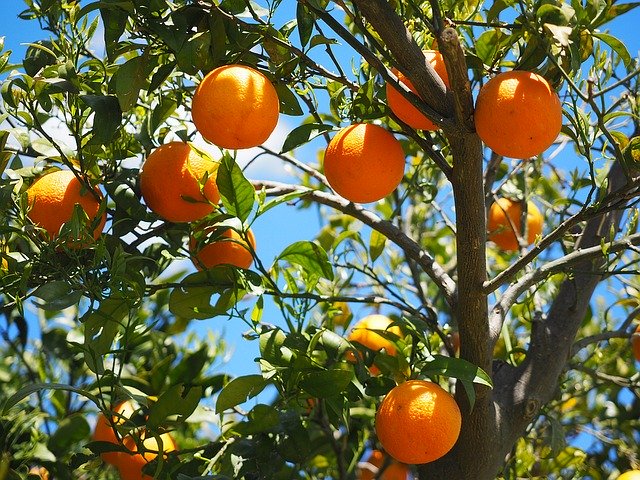MASTERING FRUITING PLANTS
The article focuses on Mastering Fruiting Plants. . This is an excerpt from the book called “GROWING FRUIT TREES- NOVEL CONCEPTS AND PRACTICES FOR SUCCESSFUL CARE & MANAGEMENT”. Some useful techniques on fruiting.
For a productive orchard, mastering the fruiting process and controlling the branching are closely linked to the apricot tree’s performance. The variety’s level of fertility and the way it branches will determine the type and frequency of upkeep.
PRUNING FOR FRUITING
This should take place just before flowering. He goals are to limit the number of fruits by reducing the number of floral buds, and to improve the quality of the fruit by selecting the best branches for producing quality fruit. Thinning the tree involves removing excess fruits (before the pit hardens) after determining the fruit load capacity for the tree and each of its branches. this quantitative sorting is best combined with a qualitative sorting that involves eliminating fruits that are too small, poorly placed (shaded or in tight clusters), or already starting to rot. Fruits should be spaced along shoots and among spurs to achieve an even distribution.
Any medium to long fruiting branches situated in less favourable areas should be removed-from the lower portion of the tree, from within the crown, or any that are hanging. Where there is a high density of branches, thinning out some of them is preferable to shortening all of them
For certain productive varieties with mostly short branches, the selective removal of spurs serves to thin the crop and reduce crop load in subsequent years. Spur removal should take place primarily along the base and under the branches.
THINNING FRUITS
This occurs after fruit set and the eventual dropping of small fruits, but prior to the “pit-hardening” stage, which can be determined by cutting across the tip of the fruit and the seed. Thinning at this time will produce optimal results in terms size and quality.
The goals are to limit the number of fruits in the tree (thereby fostering consistent production of quality fruit). To reduce the possibility of disease (there is an increased risk of Monilia if fruit is poorly distributed in “cluster”). And to guarantee proper tree development by avoiding excess weight
The number of fruits that a tree will bear after thinning depends on its variety and health. On a tree of average vigor, the yield may vary from 750 to 1,250 fruits.
It is quite difficult to visually count the number of apricots on a tree, and usually that6 estimate comes in low. Only a complete count will give a precise idea of what the tree can handle. Some trees may bear more than 2,000 apricots prior to thinning! The way the fruits spread throughout the tree is equally important; this results from the variety’s behaviour and its tendency to produce on short and/or long branches.
On short branches ( spurs and flowering shoots), in order to prevent contact between fruits a harvest there should be no more than two fruits per cluster. Yet if there is a particularly strong fruit set or if the variety produces a high density of spurs, you may want to maintain only one fruit or none at all
On long branches, fruits that set along the base of central portion of the branches will have better size than those that set toward the ends of the branches. Thinning mainly involves eliminating fruits from the last third of each branch. On the rest of the branch (and as with short branches), it is sufficient to ensure that production is evenly spread, maintaining one frit per node with a hand’s width between fruits
The mistaken impression of low production when the fruits are still small, reinforced by the desire for a “good harvest,” often leads growers to thin the tree inadequately. Wherever there is young fruit, you should try to imagine the 2-inch (55 mm) fruit-in diameter-that it will become.
After thinning, it is important to verify whether your calculations for the total number of fruits for the tree have been reached.
PRUNING
The two main types of pruning cuts involve “heading” or “heading back,” and “thinning” or “thinning out.” Trees respond differently to these cuts.
Heading back means cutting the plant back to a stub, a lateral bud, or a small lateral branch. Depending on the severity of pruning, heading back promotes a flush of vigorous, upright, and dense new growth from just below the cut.
Thinning means either removing a lateral branch at the bottom where it attaches or shortening a branch’s length by cutting to a later large enough to act as a replacement for the terminal limb. A woody plant responds to thinning by becoming more open but retaining its natural growth habit and does not usually produce a flush of vigorous new growth from the cut. Foliage grows more deeply into the tree because more light can penetrate the canopy. Except when trees are newly planted, pruning cuts should be mostly thinning cuts.
Pruning takes place in the spring (at least one month prior to harvest) in order to improve light penetration, fruit quality, and coloration, as well as floral induction (the production of new flower buds) in the more shaded spots. Only shoots that may be useful in bolstering saggy scaffold branches should be preserved.
In cases where it is difficult to grow long fruiting branches (as with ‘Bergeron’ in the Rhone Valley, for example, or with younger ‘Orangered’ trees), the best-situated branches should be cut back, preserving three or four buds and promoting the growth of one or more fruiting branches.
SUMMER PRUNING
This promotes branch development and health. The two basic goals of summer pruning are to obtain optimal thinning and to enhance the tree’s branching potential. Keep in mind the following points:
Suppressing poorly lit branches and secondary branches around the base of the tree as well as excess scaffolds should always be comprehensive, “all or nothing.”
Renovating the scaffolds, if there is reason to, involves cutting back shoots that are two or three years old. It is essential to “anticipate” how the scaffold will be renovated by preserving an epicormic branch ( a new, vigorous shoot breaking from a location other than a leaf axil and growing mainly upright ) two to three seasons prior to removal of the older scaffold.
Removing fruiting organs, especially excess flowering shoots or spurs (because of lack of light or scraping of fruit by shoots), is the last phase of summer pruning. Branch selection will depend on their position within the tree and the quality of their floral buds.
Recently strengthened scaffold branches may be bent if necessary, while the tree is producing sap(that is ,actively growing).

Mastering fruiting plants will give confidence to the gardener. Hope this article was useful, Continue reading about “Native California Trees“
